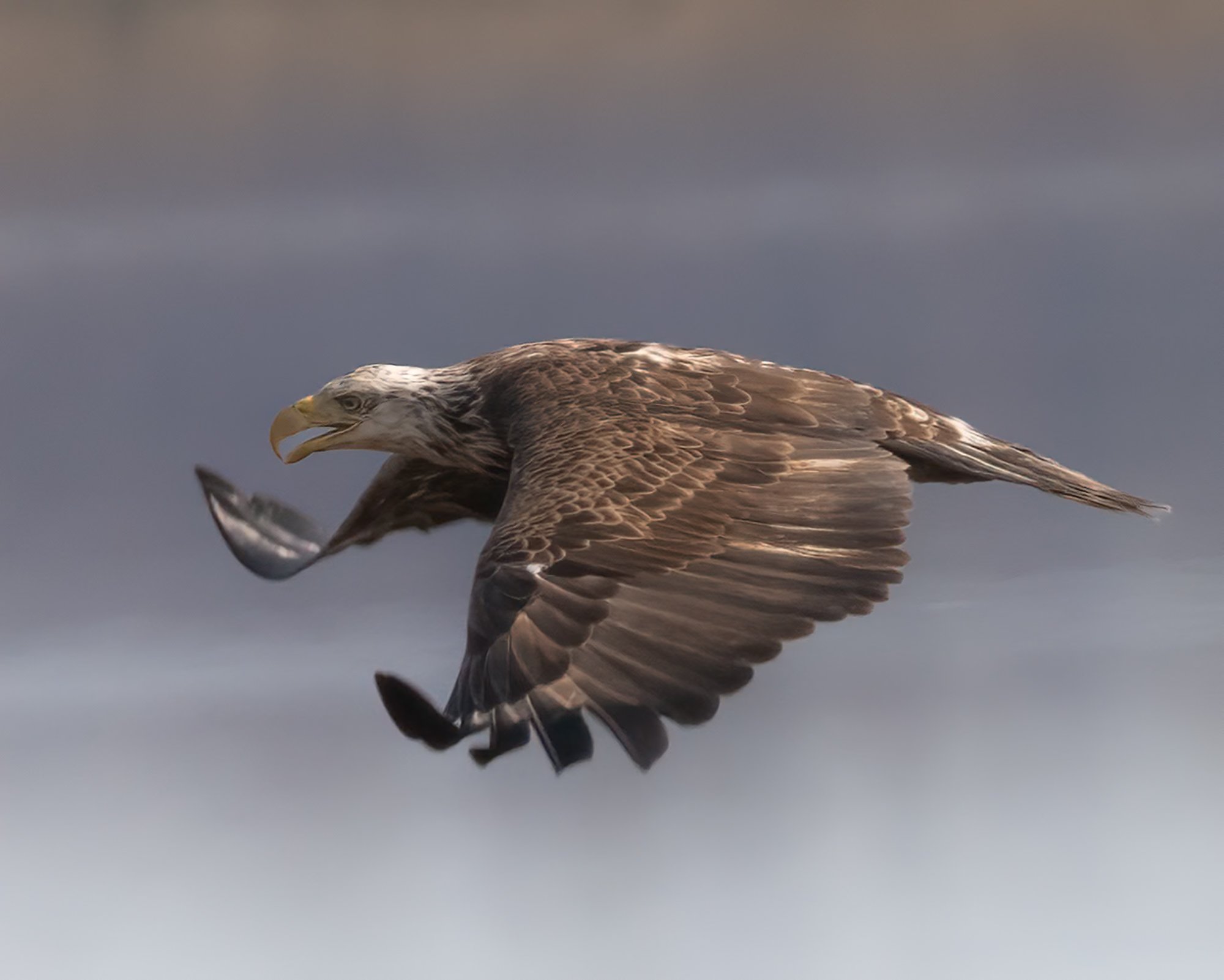Although they are present year-round, this is the time of year when the eagles are most easily observed on the Delmarva Peninsula. In Spring nests are active with newly hatched chicks and fishing is good in the marshes of the Chesapeake Bay and Delaware shore.
Eagles are amazing birds of prey that have come back from near eradication in the 1970s caused by the use of DDT pesticides which impaired the egg development of the eagles and other birds. Since the federal DDT ban in the 1980s, the eagle populations have made a remarkable recovery. One current danger for eagles is lead poisoning from the illegal use of lead shot used to hunt other waterfowl. Eagles are scavengers and can be poisoned by lead shot in a carcass.
Adult bald eagles are distinguished by the pure white plumage on the head. It takes about five years for the juveniles which have brown mottled feathers to develop the white head of an adult.
One of my favorite places to photograph eagles is the Bombay Hook National Wildlife Refuge in Delaware. When arriving at sunrise I have recently encountered as many as twelve eagles perched in a single tree overlooking creeks of the tidal wetlands. I typically don’t have to wait long for them to start peeling off to begin fishing.
Circling high above, the eagles look down to focus on prey in or out of the water. The eyesight of an eagle is about eight times more acute than a human and this allows them to spot prey like a rabbit as far away as two miles. An eagle diving for a fish is the model of intense concentration. Using their formidable talons, they scoop up the fish close to the surface and carry it to a safe feeding spot or the nest. Catching the fish is not always the end of the effort as other eagles will often challenge each other by trying to snatch the fish away in midair. I have seen eagles struggling for possession of a fish high above and to the point that neither is successful, and the fish drops back into the water. All in a day’s work.



